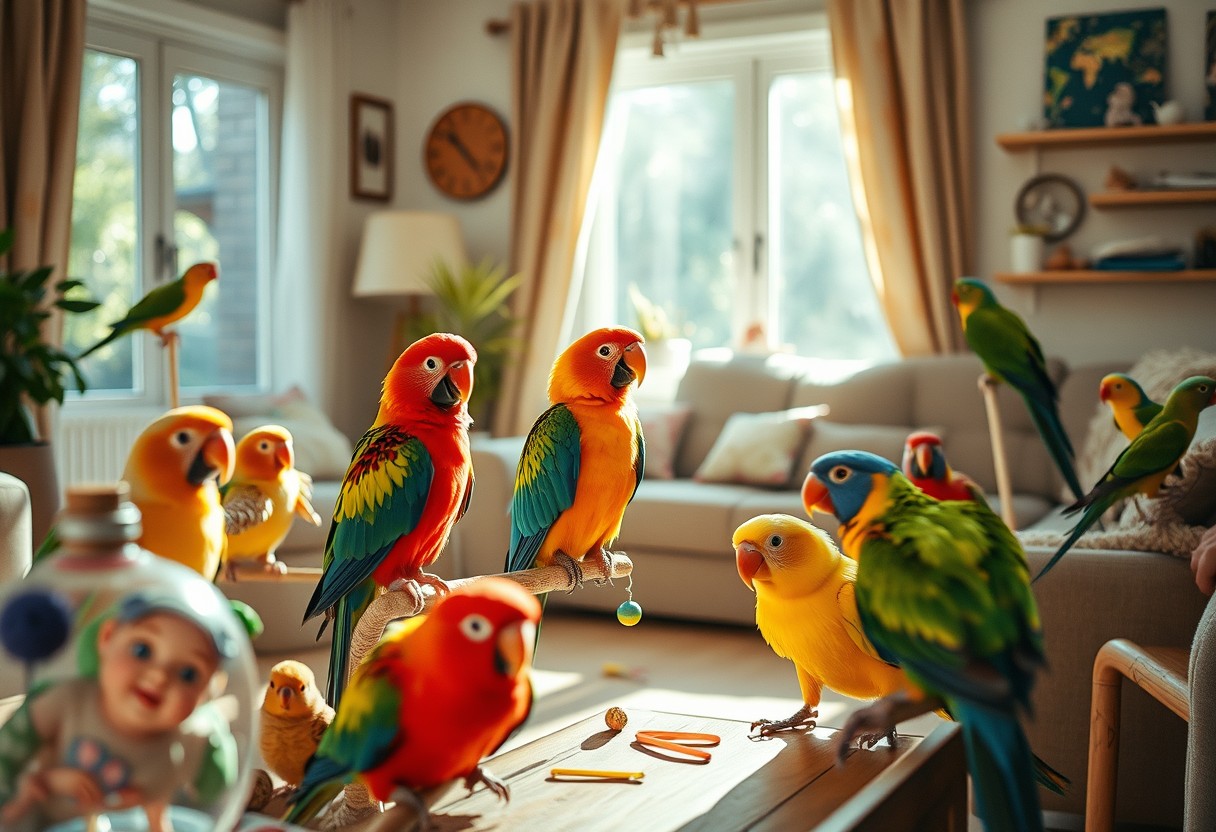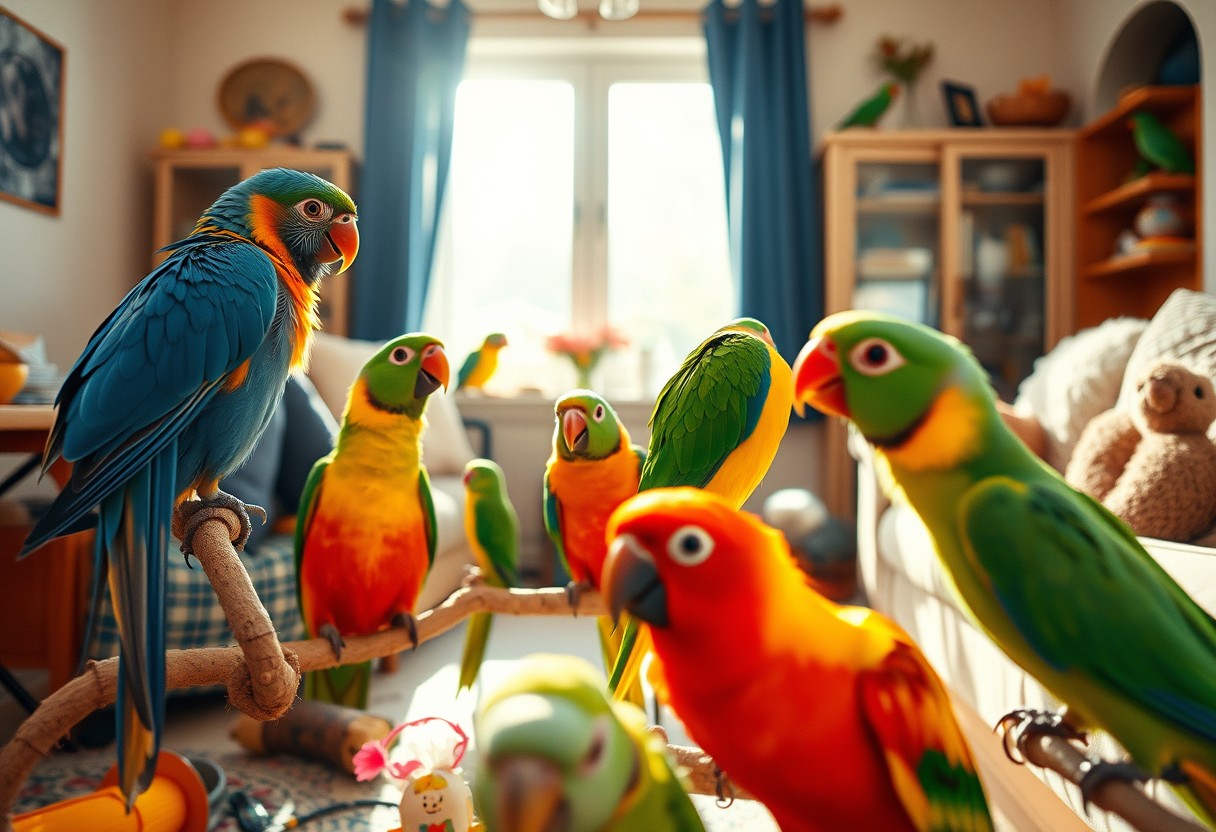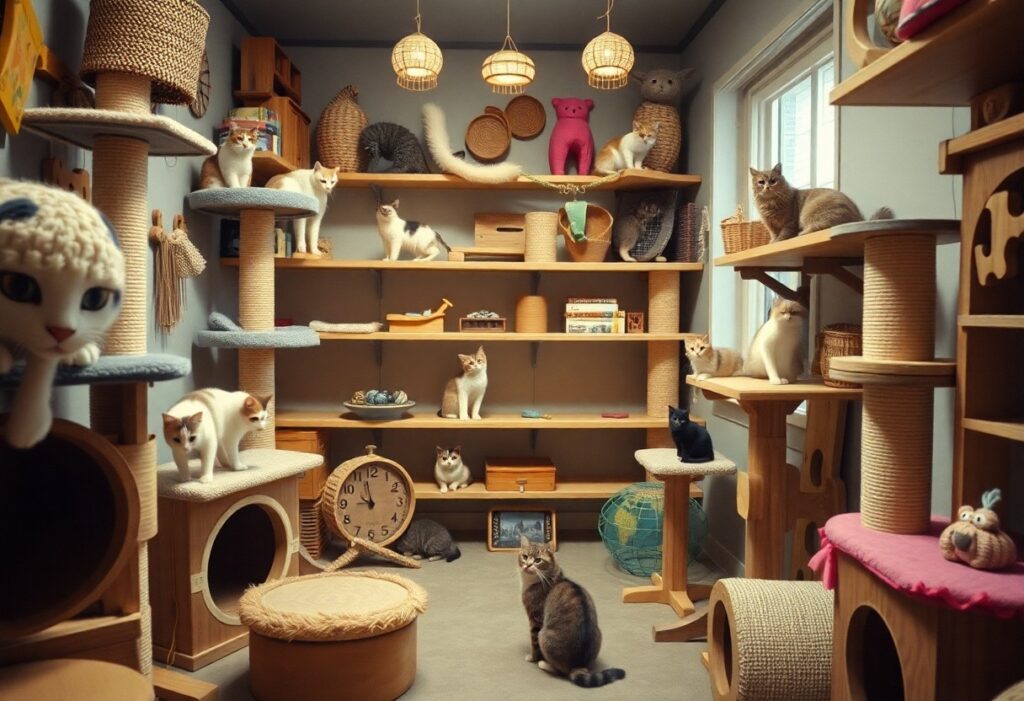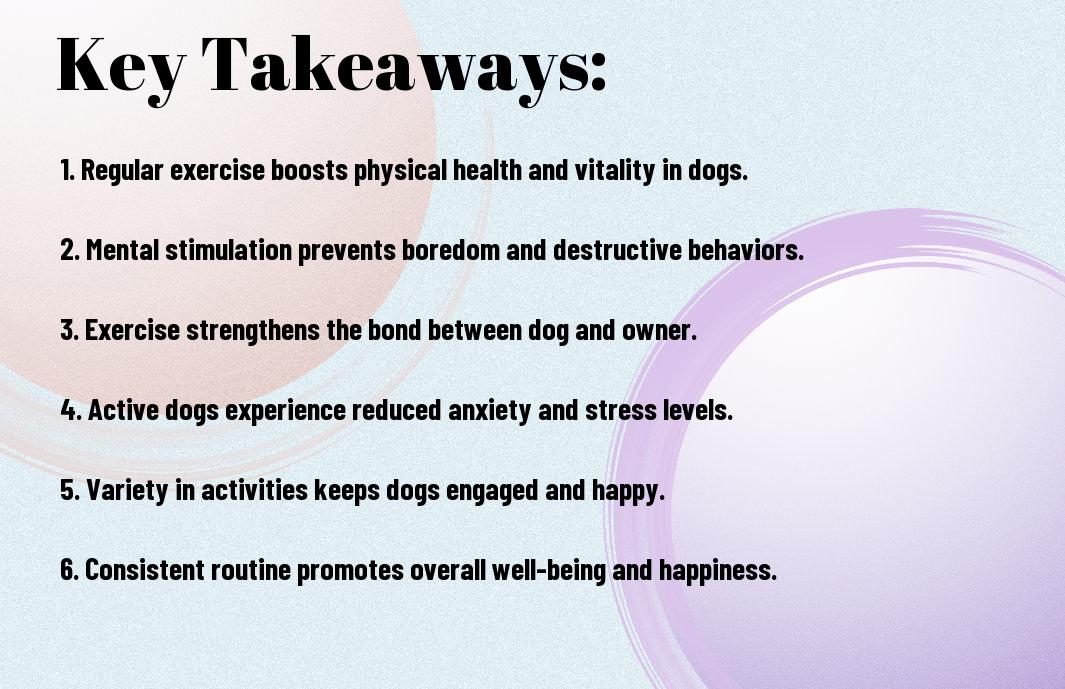It’s crucial for you to understand how social interaction profoundly impacts your bird’s well-being. Engaging with other birds not only fosters crucial social skills but also reduces stress and promotes mental stimulation. Birds that experience regular interaction are less prone to behavioral issues and often exhibit healthier, happier tendencies. By facilitating these interactions, you can significantly enhance your bird’s quality of life, ensuring they thrive in their environment. Note, a socially engaged bird is a healthy bird!


The Importance of Social Interaction
While many bird species have adapted to thrive in solitary environments, social interaction plays a crucial role in enhancing both individual well-being and overall species survival. By engaging in social activities, birds benefit significantly from cooperative behaviors that promote resource acquisition, protection from predators, and reproductive success. These interactions are vital not only for maintaining the health of individual birds but also for fostering resilient populations capable of navigating environmental challenges.
Evolutionary Benefits
Importance of social interaction can be traced back to the evolutionary advantages it offers. Birds that establish and maintain social bonds are often better equipped to cope with threats within their environment. For instance, flocking behavior provides greater vigilance against predators, allowing birds to share information about danger and alert one another in a timely manner. Additionally, through social learning—observing and mimicking the successful foraging techniques of their peers—birds can discover new food sources more efficiently, ultimately increasing their chances of survival.
The benefits extend beyond immediate survival tactics. Social structures fostered within flocks can result in increased reproductive success, as cooperative breeding—the sharing of parental duties among group members—can lead to higher offspring survival rates. By ensuring that young birds receive the necessary support for growth and development, social bonds lay the foundation for the continuity of species.
Social Structures in Avian Species
Evolutionary pressures have shaped the social structures found in various avian species. Numerous birds exhibit complex social hierarchies that dictate group dynamics and influence individual roles within flocks. Species like African grey parrots and jays demonstrate intricate social relationships, where individuals may establish alliances and engage in cooperative behaviors, such as food sharing and collective nesting. This creates not just communities, but also networks that promote genetic diversity and expand resources available to each member.
Species that rely on cohesive social structures often display remarkable communication skills and complex social behaviors. For example, social birds like flamingos and canaries use vocalizations to strengthen their social ties, convey alarm calls, or establish dominance hierarchies. This rich tapestry of interactions underscores the importance of social dynamics in avian life and exemplifies how social behavior is not merely an option but rather a vital component of avian evolution and survival.

Communication Among Birds
If you have ever observed birds in their natural habitat, you may have noticed their remarkable ability to communicate with one another. This communication is crucial for their survival and social structure, enabling them to convey important information about food sources, predators, and mating opportunities. Understanding the different forms of communication among birds can enhance your appreciation for these fascinating creatures and help you recognize the complexities of their interactions.
Vocalizations and Calls
One of the primary ways birds communicate is through vocalizations and calls. Each species has its unique set of sounds, which serve various purposes. For instance, songbirds often use elaborate melodies to attract mates or defend their territories, while alarm calls signal the presence of predators. As you listen closely, you’ll find that even within the same species, individual birds may have distinct variations in their calls, which can indicate personal identity or emotional states.
These vocalizations are not only crucial for social interaction but also highlight the importance of learning and adaptation. Young birds often learn songs from older, experienced individuals, which helps them develop their repertoire and facilitates communication within their flock. By observing these vocal exchanges, you can gain insight into the social dynamics of bird communities and appreciate the rich tapestry of sound that fills their environment.
Non-Verbal Communication
One of the most intriguing aspects of bird communication is their dependence on non-verbal signals. Birds utilize various displays, such as feather posturing, body language, and even visual markers, to convey messages to one another. For example, an assertive posture with raised feathers may signal aggression or dominance, while a more relaxed stance can indicate submission or comfort. By noting these subtle cues, you begin to understand the complex social hierarchies and relationships that exist within bird groups.
The non-verbal communication methods of birds also extend to visual displays, such as elaborate courtship rituals. Males often engage in elaborate dances and showcase their vibrant plumage to attract a mate, demonstrating their fitness and health. Additionally, some species employ silent body movements and interactions, such as mutual preening, to strengthen social bonds within a flock. Recognizing these non-verbal cues can greatly enhance your understanding of bird behavior and their communal life.
Social Interactions and Behavioral Development
Now, let’s explore how social interactions among birds significantly contribute to their behavioral development. Birds are inherently social creatures, and engaging with others of their kind is crucial for both learning and adapting to their environments. Your observation of birds in social settings can reveal a lot about how they learn vital skills, establish hierarchies, and develop personalities that are unique to their species.
Learning Through Play
To understand the importance of social interaction in bird behavioral development, consider how young birds learn through play. Play is an imperative aspect of life for many species, serving as a practice ground for important survival skills. When juvenile birds engage in playful interactions, they not only hone their physical abilities but also enhance their cognitive functions. You may witness birds indulging in games such as chasing each other or manipulating objects, fostering a sense of curiosity and exploration that is critical for their development.
Moreover, through such playful interactions, birds develop social bonds and learn to navigate complex social hierarchies. By watching and mimicking their peers, young birds can develop imperative cues about communication and cooperation that will serve them well throughout their lives. This interplay of observation and imitation shapes your bird’s character, making social interaction a vital catalyst for healthy growth and learning.
Impacts on Mating Behaviors
Behaviors in birds are heavily influenced by their social environment, especially when it comes to mating. Social interactions play a critical role in courtship rituals and mate selection. You might notice that male birds often showcase their talents—such as singing elaborate songs or performing intricate dances—primarily to attract females within a social context. These displays not only demonstrate their vitality but also their experience in social settings, as successful mating often requires navigating complex social relationships.
Social interactions can also affect the genetic diversity of bird populations. When birds form bonds and breed within a social group, it can lead to a greater pool of genetic variation, enhancing the resilience of the species. This is crucial for adapting to environmental changes and combating diseases. The dynamics of these interactions can either promote or hinder mating success, illustrating how intertwined social behavior is with reproductive strategies and the overall survival of the species.
Social bonds formed through interactions can also influence mating success—birds that are more socially adept often secure mates more effectively. However, this can lead to competition within and between groups, making social skills imperative in the mating game. By understanding the nuances of these social dynamics, you can appreciate the profound impact that interactions have on the success and continuation of bird populations.
Summing up
With this in mind, you should recognize that social interaction plays a critical role in the overall well-being of birds. Engaging with other birds not only fosters emotional health but also stimulates cognitive development and promotes necessary survival skills. Whether you are a bird owner or an enthusiast, understanding the significance of social dynamics among avian species can enhance your appreciation for their complex behaviors and needs. By providing opportunities for socialization, you ensure they have a fulfilling and enriching environment that mimics their natural habitat.
Furthermore, you may find that the benefits of social interaction extend beyond the individual birds. By observing their interactions, you can learn valuable insights about communication, hierarchy, and cooperation in the avian world. This knowledge can deepen your connection with birds, leading to more responsible companionship and conservation efforts. Ultimately, recognizing and promoting the importance of social interaction for birds will not only improve their quality of life but also enrich your journey in understanding these fascinating creatures.
FAQ
Q: Why is social interaction important for birds?
A: Social interaction is crucial for birds as it contributes significantly to their mental and emotional well-being. In the wild, many bird species are naturally social and rely on group dynamics for safety, breeding, and foraging. Interaction with other birds helps reduce stress and anxiety, promotes better physical health, and enhances cognitive skills. Social birds often engage in communal activities like preening and vocalization, which strengthen social bonds and increase overall happiness.
Q: What are some signs that a pet bird is lacking social interaction?
A: Signs that a pet bird may be lacking social interaction include excessive screaming, plucking feathers, lethargy, lack of appetite, and becoming overly aggressive or withdrawn. Birds that are isolated may also exhibit repetitive behaviors, such as pacing or swaying. It’s imperative for bird owners to observe their pets’ behavior and provide opportunities for socialization, whether through interaction with other birds, human companionship, or engaging toys that encourage play and stimulation.
Q: How can I enhance social interaction for my pet bird?
A: To enhance social interaction for your pet bird, consider the following strategies:
1. **Companionship**: If feasible, introduce a second bird to provide companionship. However, ensure that both birds are compatible in terms of species and temperament.
2. **Quality Time**: Spend time each day engaging with your bird. Activities like talking, singing, or playing can strengthen your bond.
3. **Socialization Opportunities**: Arrange playdates with other birds (with supervision) or consider bird clubs and social events where your bird can interact with others.
4. **Interactive Toys**: Provide toys that encourage cooperative play or mimic social behaviors, such as hanging swings or foraging toys.
By incorporating these practices, you can significantly improve your bird’s social well-being.











